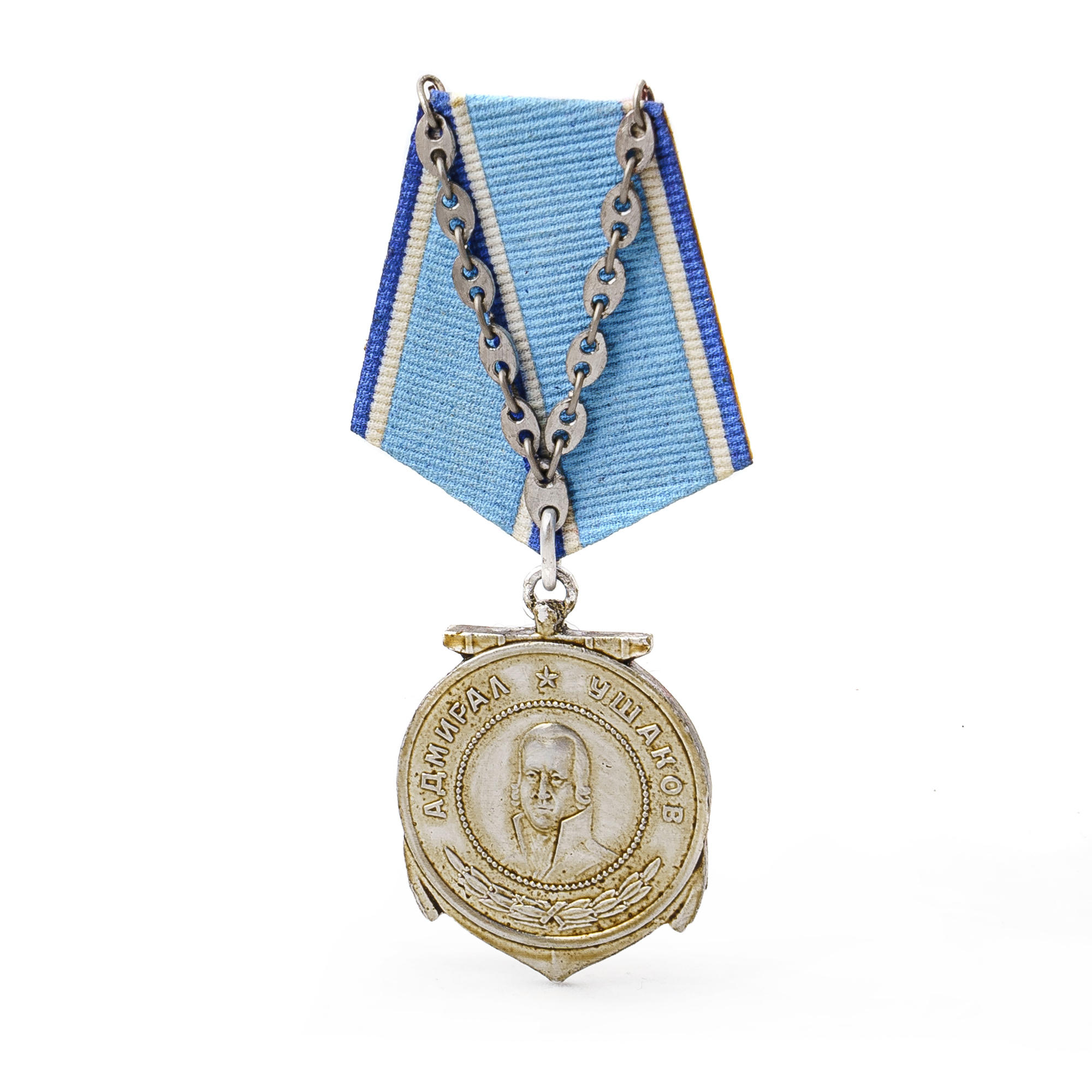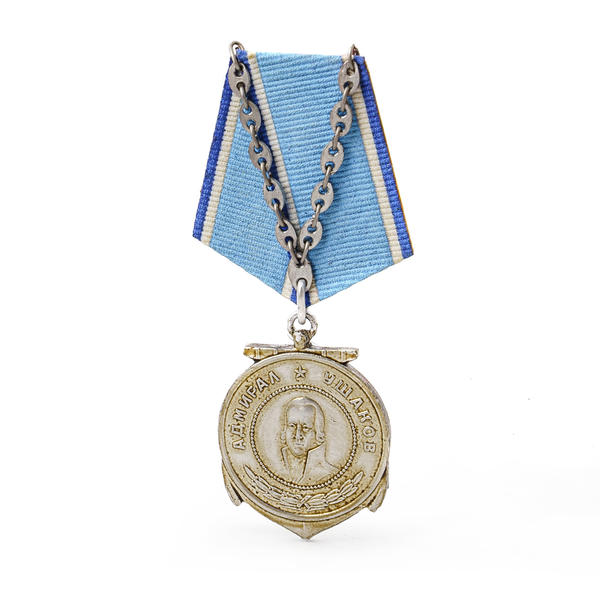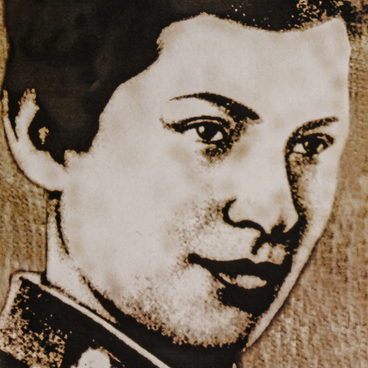The Medal of Ushakov was established in 1944. Prompted by Admiral Nikolay Kuznetsov (1904-1974), the medal was designed by architect Modest Shepilevsky (1906-1982). It is named after outstanding Russian admiral, commander of the Black Sea Fleet, Fyodor Ushakov (1745-1817), who won 43 battles without losing a single ship. Ushakov adopted a new tactics of naval battles, which he first made use of during the Russo-Turkish War of 1787-1791.
The medal was awarded to sailors and officers in the Soviet Navy for valor and heroism, displayed in combat or peacetime. The first to receive the decoration were sailors of the Black Sea Fleet, Warrant Officers Stepanenko and Gorokhov, and Petty Officer Shchevbunov. There have been cases of foreign sailors getting this honorable decoration. The medal was awarded twice on several occasions.
Along with the medal, each recipient got a special certificate, containing its serial number and information on other decorations awarded to the person. While granting the bearer the right for an allowance and bonuses, it was also needed to confirm the name of the recipient. Should it be lost, a copy of the decoration was issued in special cases only after proving the inevitable nature of the circumstances in which it had been lost. For example, a copy might be issued, if the original had been lost in combat or natural disasters. The copy either was not marked at all or had letter D (dublikat, Russian for copy) stamped on its reverse.
The Medal of Ushakov is not the only one named after great military commanders. Established in 1994, there were also Medals of Nesterov, Zhukov, and Suvorov. The former is awarded to personnel of the Russian Air Force. Those distinguished by the Medal of Zhukov received it for deeds during the fight against fascism. The third medal was given to heroes, who demonstrated courage protecting the Motherland.
Made of silver, the Medal of Ushakov is a disc of 3.6cm in diameter, featuring a portrait of Adm Fyodor Ushakov in the center. It is attached to a pentagonal suspension, draped in a light-blue ribbon with cornflower blue and white lines running along the fringes. Stretched over the ribbon, there is a chain resembling the one that is used to hoist anchors.
One of a very few decorations remained unchanged through the years since their establishments, the Medal of Ushakov is still part of the Russian system of awards.
The medal was awarded to sailors and officers in the Soviet Navy for valor and heroism, displayed in combat or peacetime. The first to receive the decoration were sailors of the Black Sea Fleet, Warrant Officers Stepanenko and Gorokhov, and Petty Officer Shchevbunov. There have been cases of foreign sailors getting this honorable decoration. The medal was awarded twice on several occasions.
Along with the medal, each recipient got a special certificate, containing its serial number and information on other decorations awarded to the person. While granting the bearer the right for an allowance and bonuses, it was also needed to confirm the name of the recipient. Should it be lost, a copy of the decoration was issued in special cases only after proving the inevitable nature of the circumstances in which it had been lost. For example, a copy might be issued, if the original had been lost in combat or natural disasters. The copy either was not marked at all or had letter D (dublikat, Russian for copy) stamped on its reverse.
The Medal of Ushakov is not the only one named after great military commanders. Established in 1994, there were also Medals of Nesterov, Zhukov, and Suvorov. The former is awarded to personnel of the Russian Air Force. Those distinguished by the Medal of Zhukov received it for deeds during the fight against fascism. The third medal was given to heroes, who demonstrated courage protecting the Motherland.
Made of silver, the Medal of Ushakov is a disc of 3.6cm in diameter, featuring a portrait of Adm Fyodor Ushakov in the center. It is attached to a pentagonal suspension, draped in a light-blue ribbon with cornflower blue and white lines running along the fringes. Stretched over the ribbon, there is a chain resembling the one that is used to hoist anchors.
One of a very few decorations remained unchanged through the years since their establishments, the Medal of Ushakov is still part of the Russian system of awards.



